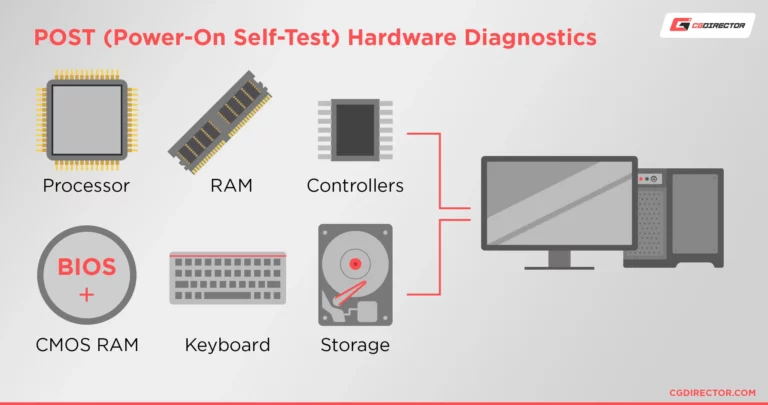Data Recovery Techniques in Computer Servicing
Welcome to our comprehensive guide on data recovery techniques, data retrieval methods, and data restoration procedures. Data recovery is an indispensable aspect of computer servicing, ensuring the retrieval of lost or damaged data from various storage devices. Whether it’s accidental deletion, file system corruption, or physical damage to the storage medium, implementing the right data recovery techniques is crucial to recover valuable information.
Throughout this article, we will explore the different types of data recovery techniques and delve into the importance of following safe data recovery methods and best practices for data backup and restoration. But first, let’s take a closer look at the initial steps involved in data recovery, starting with identifying the data sources that require recovery.
In Section 2, we will discuss how to identify data sources, including hard drives, solid-state drives, flash drives, and network drives. Understanding the type, format, size, location, and level of encryption or compression of the data will allow you to select the most suitable data recovery software and tools that support various file systems.
Identifying Data Sources
The first step in improving data recovery is to identify the data sources that need to be recovered. This includes various storage devices such as hard drives, solid-state drives, flash drives, optical discs, memory cards, cloud storage, and network drives. Different storage devices may have unique file systems and encryption methods, which can impact the data recovery process. It is crucial to determine the type, format, size, and location of the data to effectively retrieve it.
When identifying data sources, it is important to consider the level of encryption or compression applied to the data. Encryption protects data from unauthorized access, while compression reduces file size for efficient storage. Understanding these factors will help in selecting the most suitable data recovery software and tools that support the specific file systems and encryption methods used by the data sources.
By accurately identifying data sources, technicians can tailor their data recovery approach to address the unique characteristics and challenges associated with each device. This enhances the chances of successful data retrieval and minimizes the risk of further data loss or damage during the recovery process.
Different Data Sources and File Systems
| Data Source | File System |
|---|---|
| Hard Drives | NTFS, FAT32, exFAT, HFS+ |
| Solid-State Drives | NTFS, FAT32, exFAT, APFS |
| Flash Drives | FAT32, exFAT |
| Optical Discs | ISO 9660, UDF |
| Memory Cards | FAT32, exFAT |
| Cloud Storage | Various file systems depending on the provider |
| Network Drives | NTFS, FAT32, exFAT |
Table: Common data sources and their corresponding file systems.
Using Reliable Tools
When it comes to data recovery, using reliable tools is of utmost importance. These tools ensure that the recovery process is efficient and effective, allowing you to retrieve lost or damaged data with ease. One of the key tools in data recovery is data recovery software. This software is specifically designed to handle various data recovery scenarios, such as deleted files, formatted drives, corrupted partitions, and even physical failures.
There are several reliable data recovery software options available in the market. Some popular choices include Recuva, EaseUS Data Recovery Wizard, Acronis True Image, Macrium Reflect, and Clonezilla. These tools support different file systems and provide comprehensive recovery capabilities, making them suitable for a wide range of data recovery needs. Whether you’re dealing with a simple file deletion or a complex drive failure, these reliable tools can help you recover your valuable data.
It’s important to choose the right data recovery software based on the specific data recovery scenarios you’re dealing with. Different tools may have different strengths and weaknesses, so it’s recommended to do thorough research and select the one that best suits your needs. Additionally, it’s essential to follow the instructions and guidelines provided by the software to ensure optimal results.
Choosing the Right Tool for the Job
- Consider the specific data recovery scenarios you need to address.
- Research different data recovery software options available in the market.
- Read reviews and compare features to identify the most reliable and suitable tools.
- Ensure that the selected software supports the file systems and storage devices you’re working with.
- Follow the instructions and guidelines provided by the software for optimal results.

Table: Comparison of Data Recovery Software
| Software | Features | Supported File Systems | Supported Storage Devices |
|---|---|---|---|
| Recuva | Deep scan, secure overwrite, portable version | FAT, NTFS | Hard drives, memory cards, USB drives |
| EaseUS Data Recovery Wizard | Quick scan, deep scan, preview files, recover from formatted drives | FAT, NTFS, exFAT, HFS+, ReFS | Hard drives, SSDs, external drives, RAID, optical discs |
| Acronis True Image | Full image backup, incremental backup, disk cloning | FAT, NTFS, exFAT, HFS+, APFS | Hard drives, SSDs, cloud storage |
| Macrium Reflect | Disk imaging, disk cloning, file backup and recovery | NTFS, FAT16, FAT32, exFAT | Hard drives, SSDs, network shares |
| Clonezilla | Clone disk, backup and restore, remote deployment | FAT, NTFS, ext2/ext3/ext4, Btrfs, XFS | Hard drives, SSDs, virtual disks |
Best Practices for Data Recovery
When it comes to data recovery, following best practices is essential to ensure the integrity and safety of the recovered data. By implementing the right strategies, you can minimize the risk of further data loss and optimize the recovery process.
1. Preserve the Source Data
One of the most important best practices in data recovery is to avoid writing or modifying any data on the source drive before recovering it. This means refraining from saving new files, installing software, or making any changes to the drive. By preserving the source data, you can prevent any accidental overwriting or corruption that may hinder the recovery process.
2. Use a Write Blocker or Read-Only Mode
When connecting the source drive to another device for data recovery, it is recommended to use a write blocker or enable read-only mode. This ensures that no changes can be made to the drive during the recovery process, reducing the risk of unintentional modifications or infections. A write blocker acts as a safeguard, protecting the source drive from any accidental alterations.
3. Create a Clone or Image of the Source Drive
Prior to initiating the data recovery process, it is advisable to create a clone or image of the source drive. This involves making a complete copy of the drive, preserving its original state. By creating a clone or image, you can safeguard the source data and perform recovery operations on the duplicate, minimizing the risk of further damage to the original drive.
4. Verify the Integrity and Completeness of the Recovered Data
After the data recovery process is complete, it is crucial to verify the integrity and completeness of the recovered data. This involves checking if all the files and folders have been successfully restored without any corruption or data loss. By conducting thorough checks and validations, you can ensure the accuracy and reliability of the recovered data.
5. Store the Recovered Data Securely
To protect the recovered data from theft, loss, or damage, it is vital to store it in a secure and accessible location. This could be an external hard drive, a cloud storage service, or a dedicated server. Implementing proper data storage practices ensures that the recovered data is readily available when needed and remains protected from any potential risks.
By following these best practices for data recovery, you can enhance the success rate of your recovery efforts and ensure the safety of the retrieved data. Remember to consider the unique characteristics of your specific data recovery scenario and tailor your approach accordingly.
Client Education: Understanding Data Loss Risks and Data Recovery Costs
When it comes to data recovery, educating clients about the risks associated with data loss and the costs involved in data recovery services is essential. Many individuals and businesses underestimate the potential consequences of data loss, from financial losses and legal liabilities to reputation damages and emotional distress. By raising awareness and providing comprehensive information, service providers can help clients make informed decisions and take proactive measures to protect their valuable data.
Understanding Data Loss Risks
Data loss can occur in various ways, including accidental deletion, hardware failures, software glitches, viruses, and natural disasters. By educating clients about these risks, service providers can highlight the importance of implementing robust backup strategies and data protection measures. It is crucial to emphasize that data loss is not a matter of “if” but “when,” and that even with the best precautions, it can still happen. By understanding the potential risks, clients are more likely to appreciate the significance of data recovery services and invest in appropriate solutions.
Exploring Data Recovery Costs
When discussing data recovery with clients, it is vital to address the topic of costs transparently. Different factors impact data recovery expenses, such as the complexity of the recovery process, the type of storage media, the severity of the data loss, and the urgency of the recovery. Service providers should provide clients with detailed information about the potential cost range for different scenarios, ensuring that there are no hidden or unexpected charges. By being open and honest about data recovery costs, service providers can establish trust and help clients make informed decisions based on their specific needs and budget.
| Data Recovery Service | Average Cost Range |
|---|---|
| Logical Data Recovery | £100 – £500 |
| Physical Data Recovery | £500 – £2000+ |
| Emergency Data Recovery | £1000+ |
Table: Average cost range for different types of data recovery services. Costs may vary depending on the service provider, the complexity of the recovery, and additional factors.
By educating clients about data loss risks and data recovery costs, service providers can help them understand the value of data recovery services and the importance of proactive data protection measures. Transparent discussions about potential risks and expenses empower clients to make informed decisions and take appropriate actions to safeguard their valuable data.
Updating Skills and Expanding Services
As the field of data recovery continues to evolve, it is essential for professionals to regularly update their skills and expand their services. By keeping up with the latest trends and developments in data recovery, professionals can stay at the forefront of the industry and maintain a competitive edge. This involves investing in new tools and hardware, seeking professional training and certification, and staying informed about emerging technologies and techniques.
Upgrading skills in data recovery not only enhances credibility and competence but also allows professionals to offer a wider range of services to their clients. By diversifying their data recovery offerings, professionals can cater to different devices, platforms, sectors, and purposes. This enables them to attract a broader client base and address a variety of data recovery needs. Whether it’s recovering data from hard drives, solid state drives, flash drives, or cloud storage, having the necessary skills and expertise is crucial.
Expanding services also involves staying updated with the unique challenges and requirements of various data recovery scenarios. For example, SSD data recovery poses different challenges compared to traditional hard drives. SSDs have different data structures and wear-leveling algorithms, requiring specialized knowledge and tools for successful recovery. By continually improving skills and staying informed, professionals can provide effective and reliable solutions to their clients.
| Benefits of Skills Upgrade and Service Expansion | Competitive Edge |
|---|---|
| Ability to offer a wider range of data recovery services | Attracting more clients and catering to diverse needs |
| Enhanced credibility and competence | Building trust and establishing reputation |
| Ability to handle different data recovery scenarios | Providing effective solutions for various challenges |
In conclusion, updating skills and expanding services are essential for professionals in the field of data recovery. By continuously upgrading their knowledge and tools, professionals can stay ahead of the curve and provide efficient and reliable data recovery solutions. With a diverse range of services and expertise in different data recovery scenarios, professionals can attract more clients and gain a competitive edge in the industry.

Conclusion – Data Recovery Techniques
Data recovery is of utmost importance in the field of computer servicing. It plays a critical role in retrieving lost or damaged data, ensuring the smooth functioning of businesses and individuals alike. By employing the right techniques and utilizing reliable tools, data recovery can be performed efficiently and effectively, minimizing the impact of data loss.
Educating clients about the significance of data recovery is crucial. They need to understand the potential risks and consequences of data loss, including financial losses, legal liabilities, reputational damages, and emotional distress. By raising awareness about data recovery and backup options, clients can make informed decisions and take necessary precautions to safeguard their valuable data.
Although data recovery is a vital process, it does come with its own set of challenges. Different data sources, varying recovery scenarios, and the unique complexities associated with SSD data recovery can pose difficulties. However, by staying updated on the latest trends, continuously upgrading skills and equipment, and maintaining a thorough understanding of the challenges, data recovery professionals can overcome these hurdles and deliver reliable and efficient services to their clients.
In conclusion, data recovery is an integral part of computer servicing, ensuring the retrieval of lost or damaged data. Its importance cannot be overstated, as it not only safeguards valuable information but also helps businesses and individuals recover from unexpected data loss incidents. By recognizing the significance of data recovery, addressing the associated challenges, and taking proactive measures to prevent data loss, professionals can provide reliable and effective data recovery services to their clients, maintaining their competitive edge in the industry.
FAQ – Data Recovery Techniques
What is data recovery?
Data recovery is the process of retrieving lost or damaged data from various storage devices.
What are the different types of data recovery techniques?
There are logical recovery, which deals with data loss due to logical errors, and physical recovery, which is required when the storage medium has suffered physical damage.
What are some examples of data sources that need to be recovered?
Examples include hard drives, solid state drives, flash drives, optical discs, memory cards, cloud storage, and network drives.
What should I consider when selecting data recovery software?
You should consider factors such as the type, format, size, and location of the data, as well as the level of encryption or compression.
What are some popular data recovery software options?
Some popular options include Recuva, EaseUS Data Recovery Wizard, Acronis True Image, Macrium Reflect, and Clonezilla.
What are some best practices for data recovery?
Best practices include avoiding writing or modifying any data on the source drive before recovering it, using a write blocker or read-only mode, creating a clone or image of the source drive, and verifying the integrity and completeness of the recovered data.
Why is educating clients about data recovery important?
It is important to inform clients about the risks and consequences of data loss, as well as the options and costs of data recovery and backup.
How can I update my skills and expand my data recovery services?
You can regularly update your skills and equipment, keep up with the latest trends and developments, invest in new tools and hardware, seek professional training and certification, and offer services for different devices, platforms, sectors, and purposes.
What are some challenges associated with data recovery?
Challenges include different data sources, varying recovery scenarios, and the unique challenges of SSD data recovery.












